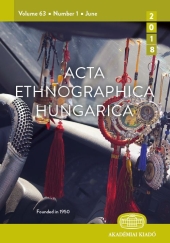Complex Ethnographic Research Methods for the Study of Protected Areas and Border Communities at the Slovenian-Hungarian Border
Complex Ethnographic Research Methods for the Study of Protected Areas and Border Communities at the Slovenian-Hungarian Border
Author(s): Ágota Lídia Ispán, Dániel Babai, László Mód, Viktor Ulicsni, Csaba MészárosSubject(s): Cultural Anthropology / Ethnology
Published by: Akadémiai Kiadó
Keywords: Ethnoecology; Anthropocene; border studies; national parks; tourism; sustainability; methodology
Summary/Abstract: The history of the Hungarian-Slovenian border region is to be understood as socio-natural history: two co-evolving entities, society and nature have always been entangled in a web of connections and reciprocal influences. It is particularly true in this border area, where ecological diversity is the result of a century-long cultivation and correlating local lifestyles and economic strategies depend heavily on the ecological and climatic conditions of the region. In view of this interdependence, we aim to provide an in-depth analysis of both human and non-human agents in a region where ethnic, national, and state relations create a thickly interwoven fabric of human network with a background of a fairly uniform and intensively cultivated environment. By doing so, we would like to challenge the idea of Anthropocene as an overarching model and bring local images to the forefront. We argue that instead of Anthropocene, members of the local communities in this border region have entered an era in which they face difficulties acting as independent agents in their environment, since they have to rely on the mediation of state-funded institutions, such as the National/Regional Parks.
Journal: Acta Ethnographica Hungarica
- Issue Year: 63/2018
- Issue No: 2
- Page Range: 471-500
- Page Count: 30
- Language: English
- Content File-PDF

